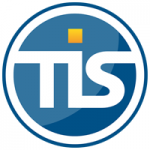Basel III and the impact on cost of hedging
| 30-3-2017 | Arnoud Doornbos | Treasury Services |
 Corporates will save hedging costs and administrative costs significantly if they shift their hedging activities to exchanges such as CME (Chicago Mercantile Exchange).
Corporates will save hedging costs and administrative costs significantly if they shift their hedging activities to exchanges such as CME (Chicago Mercantile Exchange).
In the summer of 2007 a large number of defaults on U.S. mortgage loans did arise. The banks were hit hard by the global domino effect that resulted. A major financial crisis which was followed by an economic crisis led to a revision of the capital requirements of Basel I and Basel II.
New Basel III
The core of Basel III is that many banks have to hold more capital and liquidity to their outstanding investments than they used to in the past. The rules are implemented as from 2013 and should eventually be fully effective in 2019.
Basel III will be a huge challenge for banks in the coming years. The impact on the pricing of financial products and transactions between banks and their clients will be significant.
Since July 2008, the Basel Committee for Banking Supervision has been working on Basel III for all banks worldwide. The European Commission has introduced three Capital Requirements Directives which contains concrete actions and requirements in terms of risk, capital and liquidity management within a bank. The new requirements, part of Basel III, aim to improve the quality and level of capital reserves of banks.
The capital requirements of certain products have increased and banks are encouraged to create additional capital buffers during good economic times so that they are better positioned to absorb losses during periods of economic stress.
Impact of Basel III on liquidity management
Besides sharpening the capital requirements Basel III has a major impact on liquidity management. The new liquidity standards are based on a stress test. In addition Basel III also introduces new long-term liquidity standards that reduce the mismatch between the maturities of assets and liabilities.
Banks will have to increase their reserves sharply in the coming years. Previously, banks only had to keep 2 % capital to their outstanding investments. Now with Basel III this capital requirement has been increased to 7 % (4.5 % hard buffer and an additional 2.5 % margin in bad times) . As a result banks will probably not distribute their profits in the coming years but will add to their capital buffers. Furthermore many banks will have to issue new shares in order to attract extra money in order to meet the new demands.

Counterparty risk
Within Basel III it has been determined that capital must be held for the credit risk on a counterparty a bank is exposed to in OTC derivatives or equity financing transactions. In addition, market participants are encouraged to take one central counterparty (clearing houses) for OTC derivatives. Any time a bank takes a risk against another party the probability of default exists. To offset this concern, and to support on-going stability within the interbank market, banks have long emphasized the importance of measuring and managing counterparty risk. Now banks have becomes noticeably less comfortable trading with other counterparties including other banks.
The recent deterioration in credit ratings that has hit many U.S. and European banks has led to a heightened sensitivity over counterparty risk. These apprehensions may not be voiced directly, but they become evident when front office trades that would have cleared in the past, no longer do because credit lines have been reduced. There is increasing focus on limiting exposures, even among global banks. And that is starting to affect the way we do business.
CVA (Credit Valuations Adjustment) desks have grown in popularity, as banks seek more effective ways to manage and aggregate counterparty credit risk.
The market has changed now in terms of how counterparty credit risk was calculated. Now, no client is assumed to be truly risk free. Different prices are now expected for different clients on that same interest rate swap, depending on variables including the client’s rating and the overall direction of existing trades between both parties.
On all new interest rate, FX, equity, or credit derivatives, CVA desks price the marginal counterparty risk for inclusion into the overall price charged to the client. CVA is a highly complex calculation.
CVA looks at default through the spread of the counterparty. A swap facing a single B credit that trades at 1200 in CDS is going to be charged a lot more than the same swap facing a AA counterparty. The CDS spread is normally a core input of CVA pricing.
What we see in practice is that in the manual process, the CVA desk team of a bank often passes along suggestions to the salesperson for improving the credit risk in a trade and enabling the sales person to offer the trade at a lower credit price. Examples of that would include improving the collateral agreement with a client, or inserting a break clause.
In the traditional CVA approach, a bank accepts a new trade, takes a fee and uses that fee to buy good hedges for all the risks in that trade. These hedges should eliminate all of the bank’s risk, but this is not necessarily the case once Basel III is taken into account.
Basel III does not recognize all types of hedges that the bank might want to use. Therefore the regulatory capital for certain trades will not be zero, even if the bank has used the full CVA fee to hedge all its risks.
The first impact Basel III has on CVA desks is on pricing. Pre-deal pricing needs to be reviewed to ensure the costs of imposed regulatory capital are covered. If not, additional pricing may need to be added. And the decision on which risks are efficient to hedge also becomes affected not just by strategic or business reasons, but also by the regulatory capital impact.
As part of Basel III’s updated regulatory capital guidelines, a new element has been added: V@R on CVA. Regulators have specified very precisely how the underlying CVA must be calculated for this charge. Banks will therefore need to decide whether to adjust their pricing and balance sheet CVA to match the Basel III rules, or to use different CVA calculations for pricing and regulatory purposes.
 EMIR / Dodd-Frank
EMIR / Dodd-Frank
The Dodd-Frank / EMIR financial reform bill gives a new set of derivatives rules that either will clean up the market or send the world spiraling off the deep end. The truth is probably somewhere in between. The crux of the derivatives regulation is the requirements that standardized swaps be centrally cleared and traded on a Swap Execution Facility, or SEF. This moves derivatives from bilateral agreements between bank and client to centrally cleared products where credit risk is no longer bank-held, but is centralized in a clearinghouse where daily margin is managed. Once clearing is in place, customers no longer are locked into a single dealer, long and short positions can be netted, and SEFs can begin to match buyers and sellers without having to worry about the credit lines of each counterparty or dealer.
This will begin the migration of the derivatives business from a principal-based OTC market toward an agency-based bid/offer SEF market.
 Treasury Services’ analysis:
Treasury Services’ analysis:
- Hedging is penalized decreasing the liquidity in the markets leading to increased costs to hedge financial risks for corporations. This is further emphasized by the penalization of the interbank markets through requirement of more capital, and additional constraints on liquidity on interbank transactions.
- There will also be an increase in administration costs for corporates costs due to EMIR.
- Corporate credit by banks is penalized: More capital is required in general. For back-up facilities on commercial paper programs it is required that banks will have to have 100% of liquid assets whilst these facilities are fully undrawn. The cost of carry will obviously be invoiced to the client. The ability of the bank to borrow long term will determine the availability of back-up facilities.
- Restrictions in maturity mismatch (including for repayments) are introduced. This may mean that the risk of borrowing short term to finance long term investments will be transferred to the corporate sector.
The advantages of the OTC market compared to exchanges has become questionable. High cost savings can be achieved by shifting your hedging activities to exchanges such as Chicago Mercantile Exchange (CME).
Shifting hedging activities to an exchange such as CME requires changes in your risk management function. This supplies the possibility to bring the cost of hedging back in your control.

Associate Partner






 The last two Thursdays, the PowertoPay, SWIFT and TreasuryServices Treasury Seminar was held in Montfoort and Antwerp. We’re happy to say that it was a success! We got a lot of positive feedback during and after the seminars. Both had the same content but were hosted on two different days. The first one was held in Antwerp, Belgium on the 2nd of March in an old monastery (Elzenveld). The second one was held in Montfoort, The Netherlands on the 9th of March in the Heeren of Montfoort.
The last two Thursdays, the PowertoPay, SWIFT and TreasuryServices Treasury Seminar was held in Montfoort and Antwerp. We’re happy to say that it was a success! We got a lot of positive feedback during and after the seminars. Both had the same content but were hosted on two different days. The first one was held in Antwerp, Belgium on the 2nd of March in an old monastery (Elzenveld). The second one was held in Montfoort, The Netherlands on the 9th of March in the Heeren of Montfoort. 

 Leoni, a well-known German manufacturer of cables and harnessing has recently made the news through a new type of fraudulent behavior. The CEO-fraud is a technique, whereby scammers act as ‘member’ of the organization and convince the controlling department to transfer funds under the pretense the company was in a financial emergency. USD 2 billion in losses due to CEO-fraud since January 2015.
Leoni, a well-known German manufacturer of cables and harnessing has recently made the news through a new type of fraudulent behavior. The CEO-fraud is a technique, whereby scammers act as ‘member’ of the organization and convince the controlling department to transfer funds under the pretense the company was in a financial emergency. USD 2 billion in losses due to CEO-fraud since January 2015. With globalisation and an increasingly complex business environment, having an efficient and centralised payment system is vital to any multinational’s success. Recognising this, we at HSBC are proud to have successfully connected to Treasury Intelligence Solutions (TIS) in Asia for automated payment and bank statement processing.
With globalisation and an increasingly complex business environment, having an efficient and centralised payment system is vital to any multinational’s success. Recognising this, we at HSBC are proud to have successfully connected to Treasury Intelligence Solutions (TIS) in Asia for automated payment and bank statement processing.
 Brexit is an ongoing issue in not just the financial world, but in the entire world. A topic which had lots of speculations, rumors and uncertainties. Although 2017 is going to bring us more clearness around Brexit, the exact date when Brexit is actually happening is still unknown. Theresa May, Prime Minister of the UK, said she will put Article 50 into motion by the end of March 2017. If she is able to put this article into motion, the actual process of withdrawal must be completed within two years. Anyhow, Brexit has its effects on the economy.
Brexit is an ongoing issue in not just the financial world, but in the entire world. A topic which had lots of speculations, rumors and uncertainties. Although 2017 is going to bring us more clearness around Brexit, the exact date when Brexit is actually happening is still unknown. Theresa May, Prime Minister of the UK, said she will put Article 50 into motion by the end of March 2017. If she is able to put this article into motion, the actual process of withdrawal must be completed within two years. Anyhow, Brexit has its effects on the economy. PowerToPay
PowerToPay

